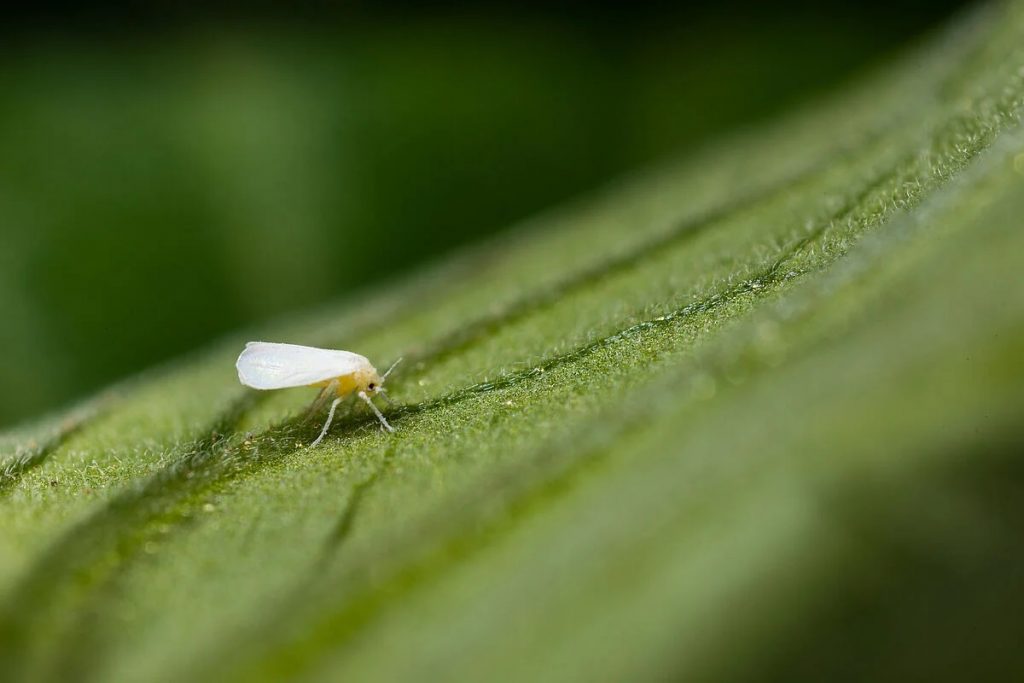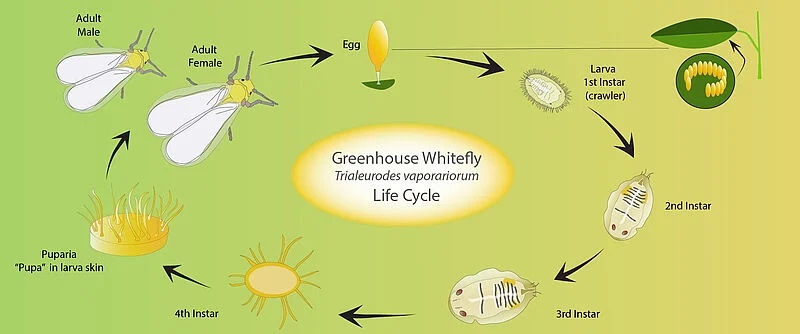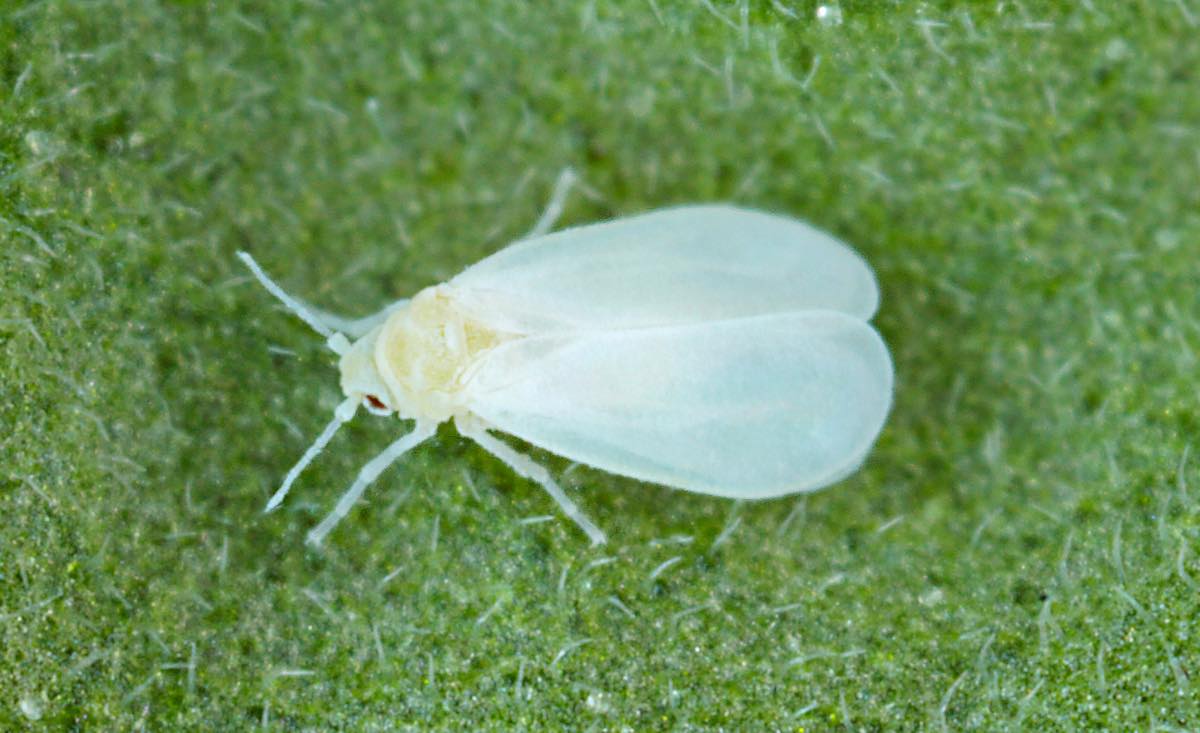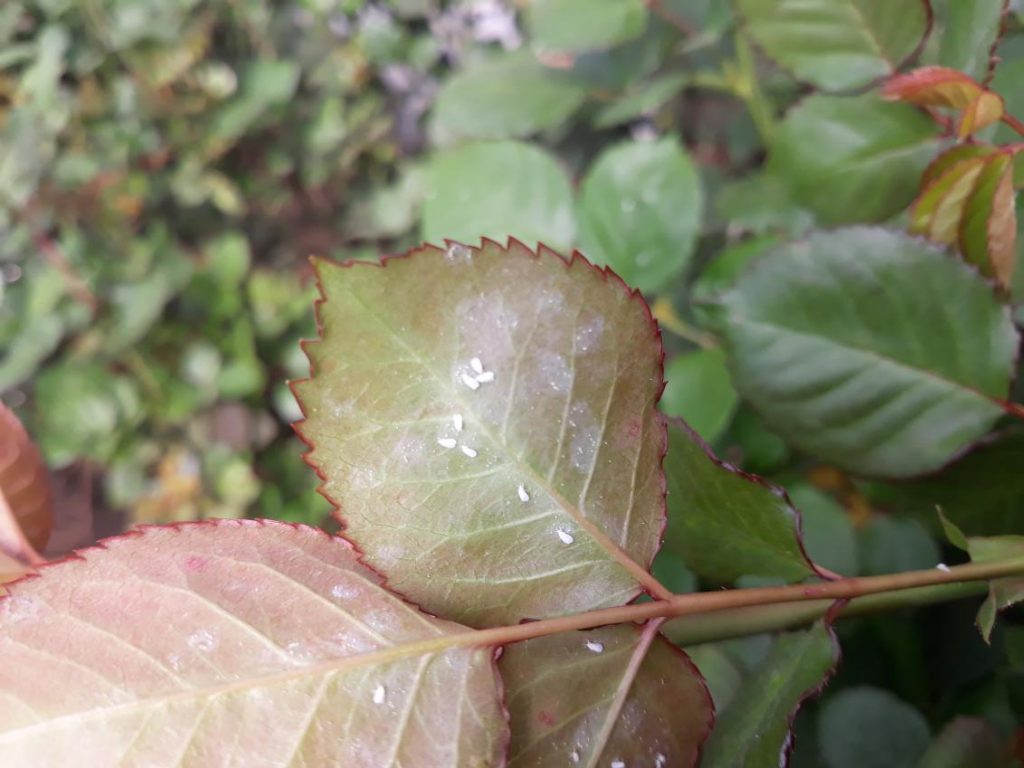
Whiteflies are a formidable pest in the world of horticulture, particularly for those working with cut flowers.
These tiny, winged insects may seem inconsequential at first glance, but they can wreak havoc on flower crops.
Whiteflies are not only destructive, but they also pose a threat to the economic health of the cut flower industry. In this article, we will take a closer look at the biology, impact, and control of whiteflies, with a special focus on their effect on cut flowers. By understanding the habits and characteristics of these pests, growers can take effective action to protect their crops and maintain high-quality flowers for the market.
The Life Cycle and Biology of Whiteflies
Whiteflies are small, soft-bodied insects, generally less than 2 millimeters in length. They belong to the family Aleyrodidae and are closely related to aphids and mealybugs. Though there are over 1,500 species, the two most notorious species impacting cut flowers are the greenhouse whitefly (Trialeurodes vaporariorum) and the silverleaf whitefly (Bemisia tabaci). Both thrive in warm, humid environments, making greenhouses and flower production facilities ideal breeding grounds.
The life cycle of whiteflies is relatively short, typically lasting between 18 to 25 days depending on temperature and humidity. The female whitefly can lay over 200 eggs in her lifetime, and eggs are often laid on the underside of leaves.
Within a few days, the eggs hatch into nymphs, which attach themselves to leaves and begin feeding. These nymphs will molt multiple times before maturing into adults.

The rapid reproduction cycle of whiteflies allows them to multiply quickly, leading to infestations that can be difficult to control.
How Whiteflies Impact Cut Flowers
Whiteflies cause both direct and indirect damage to cut flowers. Directly, they feed on plant sap, draining essential nutrients from the flowers and weakening the plants. This feeding can lead to stunted growth, discolored leaves, and reduced flower size, making the flowers less appealing and diminishing their market value.
One of the most notable problems associated with whiteflies is the production of honeydew. This sticky substance, excreted by the whiteflies as they feed, serves as an ideal breeding ground for sooty mold—a black fungus that grows on the honeydew deposits. Sooty mold does not directly damage plants, but it can cover leaves and flowers, impairing photosynthesis and reducing the aesthetic value of flowers.

For cut flowers, where appearance is paramount, sooty mold can render blooms unsellable. Furthermore, whiteflies are known vectors of plant viruses such as the Tomato yellow leaf curl virus (TYLCV) and Tobacco mosaic virus (TMV), which can spread rapidly through a flower crop, causing even more significant damage.
Identifying Whitefly Infestations
Early detection of whiteflies is critical in preventing large-scale infestations. Whiteflies are typically found on the undersides of leaves, where they congregate to feed and lay eggs. Their small size can make them difficult to spot, but their tendency to scatter in a cloud when disturbed provides a clear sign of their presence. Other signs of infestation include yellowing leaves, stunted plant growth, and the appearance of honeydew or sooty mold on leaves and stems.
Regular scouting and monitoring are essential, especially in greenhouses where conditions are favorable for whitefly reproduction. Sticky traps, typically yellow, can be used to monitor whitefly populations by attracting the adult insects. Inspecting the traps weekly will help growers track population trends and catch infestations early before they spread across crops.
Integrated Pest Management for Whiteflies
Controlling whiteflies requires a combination of strategies to be effective. Integrated Pest Management (IPM) offers a holistic approach, combining cultural, mechanical, biological, and chemical methods to reduce whitefly populations while minimizing environmental impact.
Cultural Controls
Cultural controls are preventive measures that make the environment less hospitable for whiteflies. By managing greenhouse temperatures and humidity, growers can make it more difficult for whiteflies to reproduce. Cleaning up plant debris, sanitizing tools, and removing infected plants can reduce the chances of an outbreak. Ensuring proper spacing and ventilation in greenhouse setups also helps minimize humidity, making conditions less ideal for whiteflies to thrive.
Mechanical Controls
Sticky traps are one of the most effective mechanical tools for controlling adult whiteflies. These traps attract and capture the insects, helping to reduce their numbers and offering a valuable monitoring tool. Additionally, physical barriers such as insect netting can be installed to limit whitefly access to vulnerable plants.
Biological Controls
Biological controls involve introducing natural predators or parasites to manage whitefly populations. In the case of whiteflies, several beneficial insects can help, including the parasitic wasp Encarsia formosa and the predatory beetle Delphastus catalinae. These natural enemies of whiteflies can be introduced in greenhouse environments, where they help keep the pest population under control. Fungal pathogens, like Beauveria bassiana, can also be effective in targeting whiteflies. These biological agents are particularly useful in IPM because they do not rely on chemical pesticides and are generally safe for other beneficial insects.
Chemical Controls
In severe infestations, chemical pesticides may be necessary to bring whitefly populations under control. However, whiteflies have developed resistance to many commonly used insecticides, which makes choosing the right product crucial. Insect growth regulators (IGRs) such as pyriproxyfen and buprofezin can disrupt the whitefly life cycle, targeting immature stages and preventing them from maturing into adults. Systemic insecticides, which are absorbed by the plant and affect the whiteflies when they feed, can also be effective.
When using chemical treatments, it is essential to rotate products with different modes of action to reduce the risk of resistance.
Additionally, chemicals should be applied sparingly to avoid harming beneficial insects and other organisms in the ecosystem.

The Economic Impact of Whiteflies on the Cut Flower Industry
The presence of whiteflies in cut flower crops can lead to significant economic losses. The aesthetic damage caused by honeydew and sooty mold often makes affected flowers unsellable, leading to waste and loss of income. In some cases, infestations are severe enough to require entire crops to be discarded. This, coupled with the cost of pest management measures, can put a strain on growers’ finances.
Export restrictions are another economic consideration. Some countries have strict quarantine regulations regarding whiteflies, and the discovery of whitefly infestations in cut flowers can result in rejected shipments, loss of market access, and damage to a grower’s reputation. For flower producers who export their products, ensuring crops are whitefly-free is crucial to maintaining trade relationships and meeting regulatory standards.
Preventative Strategies for Long-Term Control
Preventing whitefly infestations in cut flower crops requires vigilance and consistent application of IPM strategies. Regular monitoring, environmental control, and the use of natural enemies are effective preventative strategies that reduce reliance on chemical pesticides. Training workers to recognize the signs of whitefly infestations and respond swiftly is also essential for early intervention. For exporters, working closely with inspectors to meet quarantine standards and establishing protocols for inspection and treatment can help prevent economic losses.
Conclusion
Integrated Pest Management provides a comprehensive approach to managing whitefly populations effectively while minimizing the environmental and economic costs associated with chemical pesticides. For growers in the cut flower industry, staying one step ahead of whiteflies is essential to success in this beautiful but highly competitive field.
